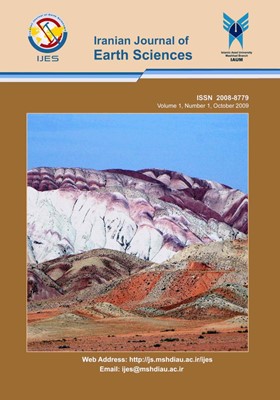A comparison between geochemistry of metapelites of Hindoli and Jahazpur Groups: Two Precambrian low-grade metasedimentary sequences in NW India
Subject Areas : MineralogyA. Saxena 1 , M.K. Pandit 2 , B.S. Bali 3
1 - Department of Geology, University of Rajasthan, Jaipur 302055, India
2 - Department of Geology, University of Rajasthan, Jaipur 302055, India
3 - Department of Geology & Geophysics, University of Kashmir, Srinagar 180 005, India
Keywords:
Abstract :
The Bundelkhand-Aravalli craton is the most important lithotectonic unit in the central and western India where Paleoproterozoic Aravalli Supracrustal sequence has been deposited over an Archaean basement, the latter also known as the Banded Gneiss Complex (BGC). A NE-trending linear metasedimentary sequence, designated as the Jahazpur Belt occurs along the eastern fringe of the Aravalli Supergroup. This belt comprises low-grade metasedimentary assemblages of Hindoli (lower unit) and Jabhazpur (upper unit) Groups. Although predominantly pelitic in composition, both the groups show subtle variations in geochemical characteristics, such as in SiO2, Al2O3, TiO2 etc. and critical trace element (Th, Sc, Rb, etc.) characteristics. CIA (Chemical Index of Alteration) values vary from 73 to 79 in Hindoli metapelites and from 71 to 81 in Jahazpur metapelites indicating moderate to high degree of weathering and alteration in both the cases. The CIA data underline a granodioritic to tonalitic source composition for Hindoli metasediments and a relatively more felsic source (granitic) for Jahazpur metapelites. A probable and likely provenance for the Hindoli metapelites could be analogous to the Banded Gneiss Complex (BGC) which includes TTG gneisses as a major component.


